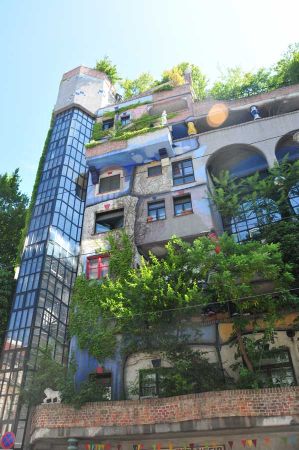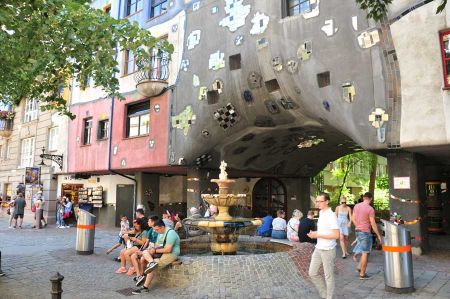Friedensreich Hundertwasser - architect and environmentalist
- Written by Portal Editor
As an impulsive opponent of the "straight line" and any standardization and typification in the environment, which is especially significant in his work in the field of architecture and construction, Friedensreich Hundertwasser distinguished itself by its imaginative vitality and individuality.
From the citizen Friedrich Stowasser, he developed into a Friedensreich Regentag Dunkelbunt Hundertwasser, which is an extraordinary name already. At least a part of his own naming is very clear, from slavic language sto means one hundred.
Born in Vienna on December 15, 1928, Hundertwasser primarily worked as a painter. At the age of seven, he went to the Montessori school in Vienna, where the artisans there attributed him "extraordinary form and color."
After his matriculation at the Bundesrealgymnasium Wien XX, Unterbergergasse, in 1948, he attended the Vienna Academy of Fine Arts for three months in the winter term 1948/49. Already there he began to sign his works with the artist name Hundertwasser. Shortly after he had finished his studies, Hundertwasser traveled to Italy for the first time in April 1949. There he met the French artist René Brô. Together they traveled to Paris in 1950.
Trips took him to Morocco, Tunisia, Sicily and Aflenz / Styria.

In 1959 he was invited as a guest lecturer to the Hamburg College of Fine Arts. In December of the year he painted the infinite line together with his students in his classroom. During this performance, there was a huge discussion and he got an immediate dismissal by the university's administrative inspector.
Two years later, Hundertwasser traveled to Japan, where he received the Mainichi Prize at the 6th International Art Exhibition in Tokyo in 1961. During the period in Japan, the name Friedensreich also arose. He translated his first name into the Japanese characters for the terms peace and rich, calling himself Friedereich, from 1968 Friedenreich and finally in the final form Friedensreich.
Hundertwasser purchased the "Hahnensäge"
In 1964 his arts were shown at the documenta III in Kassel in the Department of Painting.
From 1970 to 1972 he worked with the director Peter Schamoni on the film Hundertwasser Regentag. This was, after the documentary "Hundertwasser" by Ferry Radax (1966), the second film about the life of the artist. It is about the old salt ship, with which Hundertwasser sailed from Sicily to Venice in 1968 and which, after complete reconstruction, became a hundred-water ship's.
In the 1970s, Hundertwasser acquired several properties in the Bay of Islands in New Zealand covering an entire area of approximately 372 ha covering the entire Kaurinui valley. There he realized his dream of living and working with and in nature, among other things, in the "Bottlehouse", he has designed over there. He was able to live almost self-sufficient there using solar collectors, waterwheels and planting plants. Here, among other things, he also experimented with grass roofs.
Buried naked below a tulip tree
In 1993, he had the idea to create an artistically interesting design for the Latin-German school dictionary "Der kleine Stowasser" by Joseph Maria Stowasser on the occasion of a planned new edition, "Der Jugend zum Geschenk" (Source: wording of the publishing house). This year's edition of the German-language dictionary was published in 1994 in exactly one hundred different color variations (see "Sto" - "Hundred").
In 1995 the "Hundertwasser Bible" appeared. The 1688-page Bible is illustrated with thirty extra collages and fifty works of art created for this edition. The bindings are handmade and unique.
On February 19, 2000, Friedensreich Hundertwasser died of heart failure on the return journey from New Zealand to Europe aboard Queen Elizabeth 2. In accordance with his last wish, he was buried on his property in New Zealand on March 3, 2000 under a tulip tree, without coffin and naked, wrapped in a Koruflagge designed by him.
Please read as well:
Friedensreich Hundertwasser - House in Vienna
Egyptian blue painted on a stone slap in Brunn
-
-
-
-
-
-
-
-
-
-
-
-
-
-
-
-
-
-
-
-
-
https://www.alaturka.info/en/culture/art-craft/3975-friedensreich-hundertwasser-architect-and-environmentalist/amp#sigProId7bccd557c7
